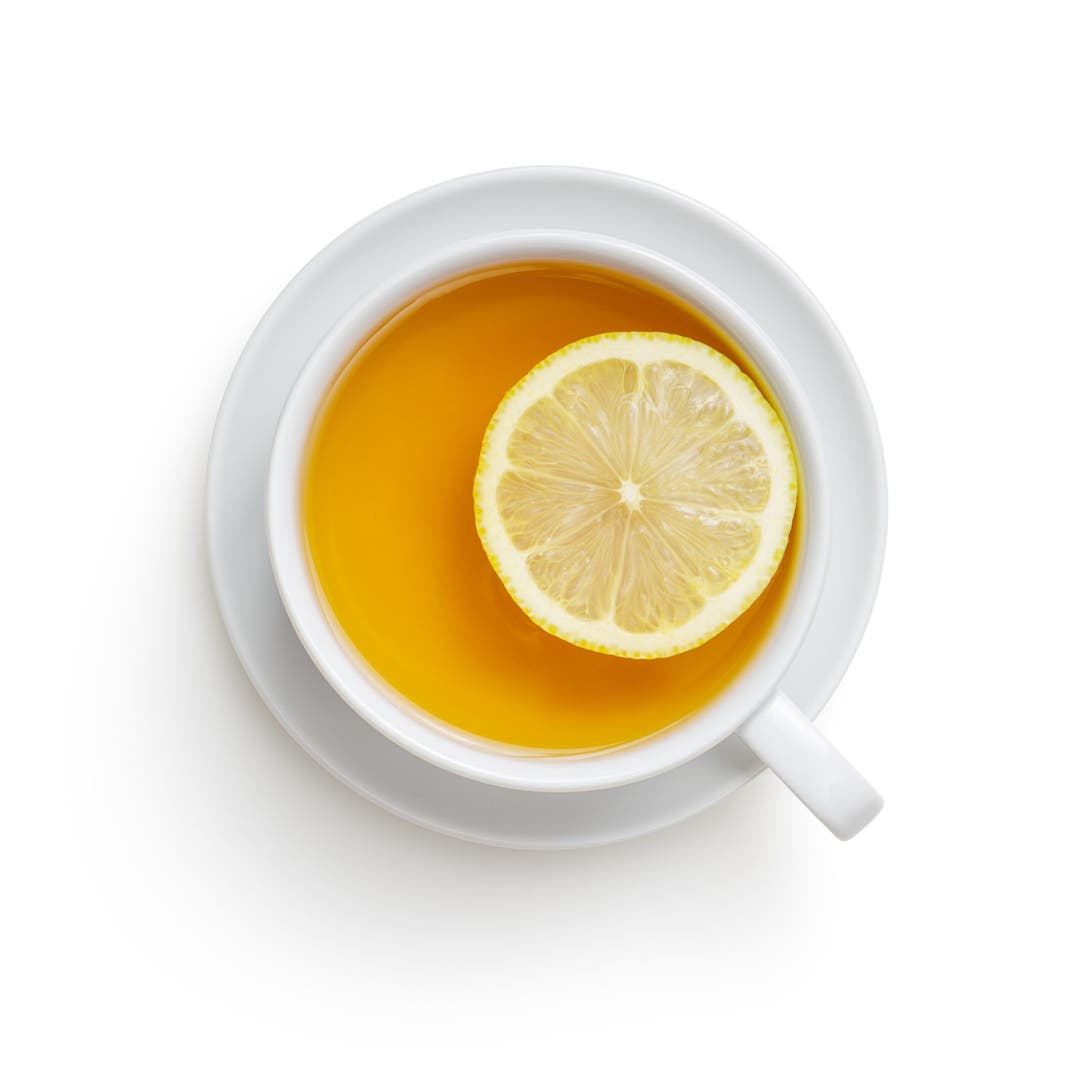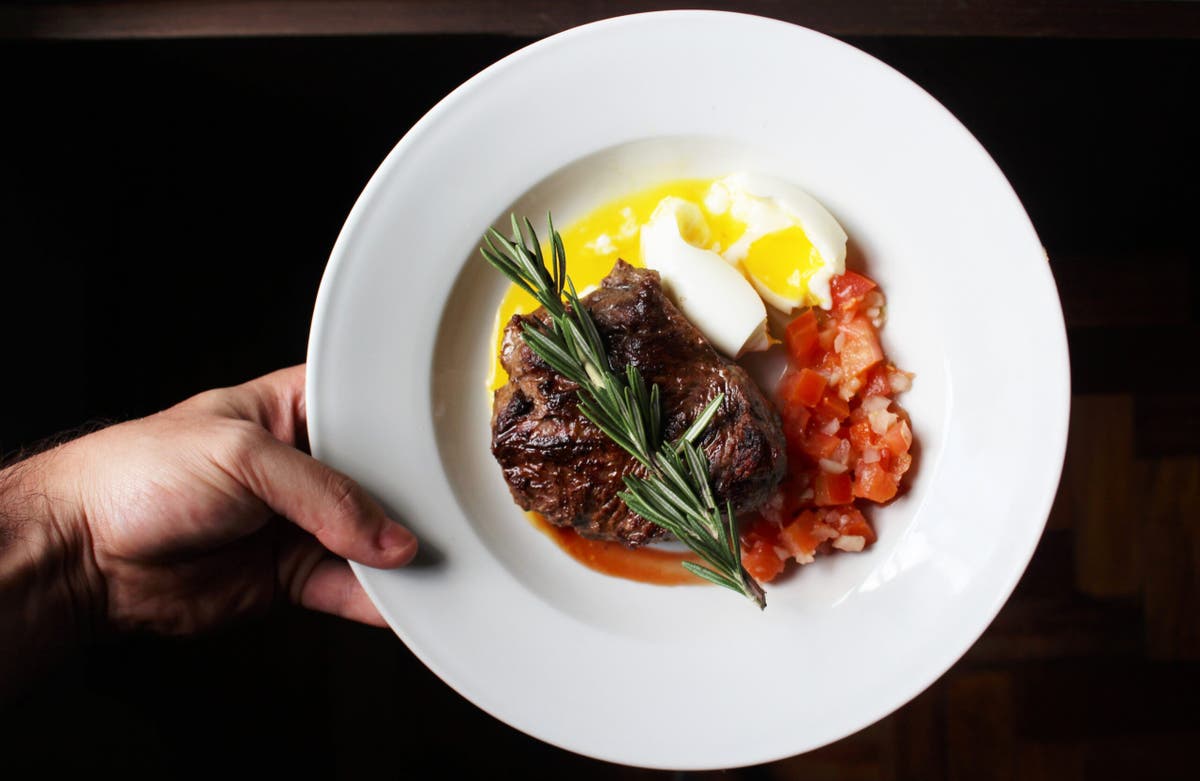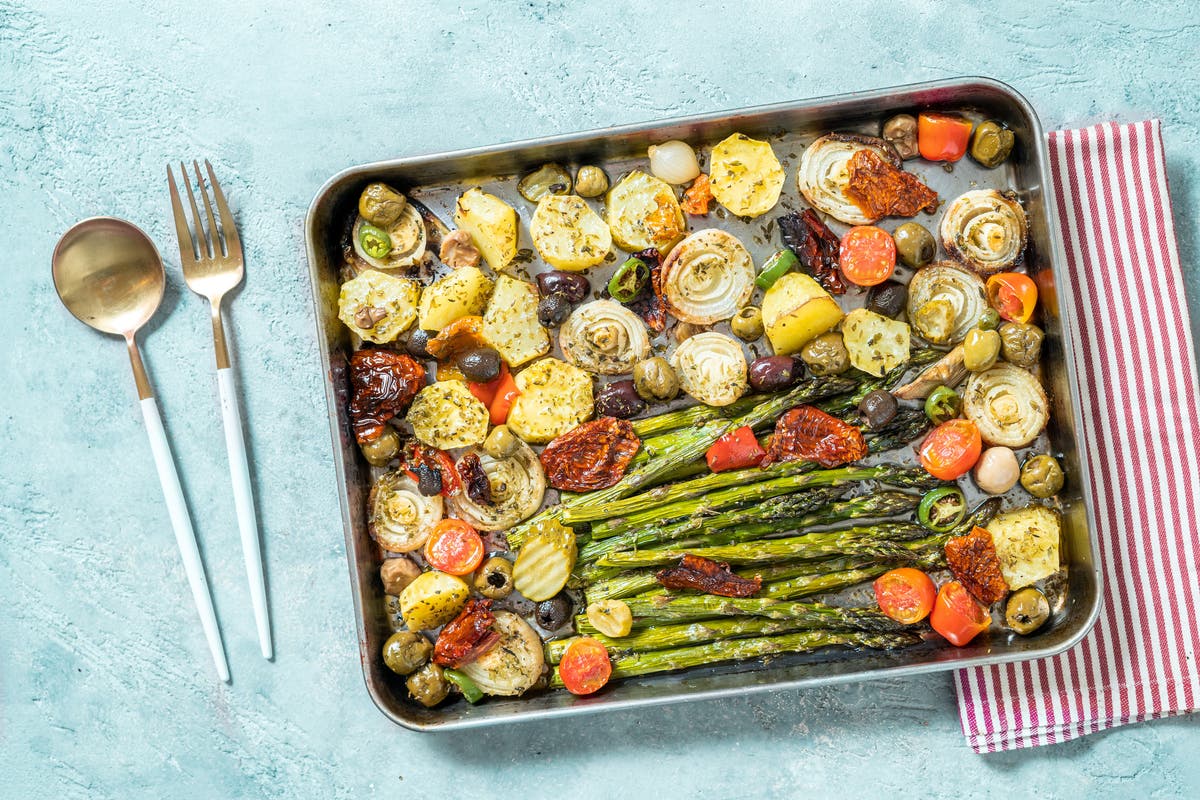Maximize Bang For Nutritional Buck With These Food Pairings

Man holding wooden box of organic vegetables, close-up (Photo: Getty Images)
Most of us know what makes up a balanced, nutritious diet: lots of fruits and veggies, protein, and healthy carbohydrates. What might be surprising is that research may offer a smarter, more targeted way to unlock more nutrients in the food we eat.
The vitamins, minerals, and antioxidants are already there in the colorful whole foods you’re eating, but sometimes our bodies have a hard time pulling them out of those foods and into our muscles, organs, and bloodstream. Especially in fruits and vegetables, some of the most beneficial nutrients aren’t “bioavailable”— in other words, our bodies need a little extra help getting at the good stuff.
Some of that help may come from eating foods in combinations that enhance the absorption of certain nutrients, according to emerging research.
The ways in which different nutrients interact with one another have not been studied extensively, says University of Illinois food science professor John Erdman. But there have been some promising recent studies by Erdman and others indicating that certain food pairings add up to more than the sum of their parts.
Here are five powerful food combos to try.

1. Green Tea and Citrus
Green tea contains antioxidants called catechins, which can help maintain a healthy heart and blood vessels and reduce the risk of various types of cancer, including skin, stomach, prostate and breast cancers.
But the problem with catechins, according to a study by Purdue University researchers published in Molecular Nutrition and Food Research, is that they are “unstable in non-acidic environments, such as the intestines.”
That means once the tea gets digested, we absorb only a fraction of the available antioxidants. The Purdue study found that adding citrus juice to green tea allowed more than five times the amount of catechins to be absorbed by the body.
Try It: This one’s easy. Squeeze some fresh citrus into hot or iced green tea. Purdue’s study found that lemon was the most effective at enhancing catechin absorption, followed by orange, lime and grapefruit.
RELATED: The Nutrition Secrets Of The Pros
2. Broccoli and Tomatoes
Both of these ingredients are considered “superfoods” on their own, but one of Erdman’s major studies, published in the journalCancer Research, says they’re even more powerful when eaten as a pair.
Together, the two foods produce what Erdman calls “an additive effect.” Different nutrients—particularly the lycopene in tomatoes and the sulfur compounds in broccoli—fight different harmful carcinogens, and Erdman says eating both daily results in the most pronounced benefits.
Cooking the veggies might help even more, by removing some of the water and allowing nutrients to be more easily absorbed, according to Erdman, who says the notion that cooking vegetables kills or leaches out nutrients is false (though this can happen when you boil them). Many of the healthy chemicals aren’t bioavailable when veggies are raw, and steaming or stir-frying is a way to open them up.
Try It: Top a pizza with tomato sauce and roasted or steamed broccoli, or toss roasted broccoli with feta cheese, sun-dried tomatoes and a dressing of olive oil and balsamic vinegar for a tangy Greek salad.

3. Herbs and Red Meat
Red meat has gotten a lot of negative press recently, but it remains one of the best sources of iron you can find. The key is moderation: some is great, to ensure there’s enough iron in your diet, but too much can result in more saturated fat than you want or need.
According to the Mayo Clinic, it’s easiest for your body to absorb iron when you eat foods high in vitamin C along with it. Fresh herbs like cilantro, parsley and thyme can pack a serious vitamin C punch. That’s good news for beef lovers: All three go great with a grilled steak, or almost any other meat.
An added bonus: When you use herbs to boost flavor, you may find you need to add less salt, keeping sodium intake in check.
Try It: Make chimichurri, a zesty Argentinian sauce. Whirl several handfuls of fresh cilantro and parsley in the blender with olive oil, shallots, vinegar and garlic until it forms a rough paste (add some chopped jalapeno or red pepper flakes if you want more heat). Season to taste with salt and pepper and serve alongside grilled steak or chicken.
RELATED: Top Recovery Nutrition Mistakes Runners Make
4. Spinach and Strawberries
If you’re vegetarian, getting enough iron can be a challenge. But the same principle applies as with meats. Pair high-iron veggies (like greens) with sources of vitamin C (like strawberries or oranges) to ensure you absorb all the iron you can.
This is especially important for vegetarians, since non-heme iron—the kind found in leafy greens and other vegetables—isn’t absorbed as easily as heme iron, the kind found in meat.
Try It: Add strawberries or orange slices to a spinach salad and top with a dressing of olive oil, orange juice, red wine vinegar and Dijon mustard.

5. Vegetables and Fat
When you eat a salad, it’s generally because you want to keep your calorie and fat intake low, right? Well findings from another Purdue University study have shown that if you’re using low-fat or fat-free dressings, you may not be getting all the healthy goodies from your salad that you could be.
The carotenoids in vegetables are “fat-soluble phytochemicals,” as Purdue professor Mario Ferruzzi writes in the study overview. That means they need some fat to be fully unlocked from a plant’s cell walls.
RELATED: The Athlete’s Guide To Environmentally Friendly Eating
The type of fat makes a difference, too. The Purdue scientists studied saturated fat (butter), polyunsaturated fat (corn oil) and monounsaturated fat (canola oil). With butter and corn oil, the more fat added to the dressing, the more carotenoids subjects were able to absorb from the salads.
But with the canola oil, a lower amount of fat in the dressing resulted in the same amount of carotenoid absorption as a higher amount—in other words, subjects absorbed the same amount of carotenoids with three grams of canola oil in their dressing as they did with 20 grams of canola oil.
What does this mean for you? Ditch the fat-free dressings and add a moderate amount of fat, especially monounsaturated fat. You’ll get more from your veggies, and it’ll probably taste better, too.
Try It: Use canola or olive oil—also primarily a monounsaturated fat—as a base for your favorite salad dressing. Making dressing yourself allows you to better control the amount and type of fat you’re getting, and keeps sugar and salt content—which can be high in store-bought options—more reasonable. Or, add some cheese to your salad, which adds both flavor and fat.